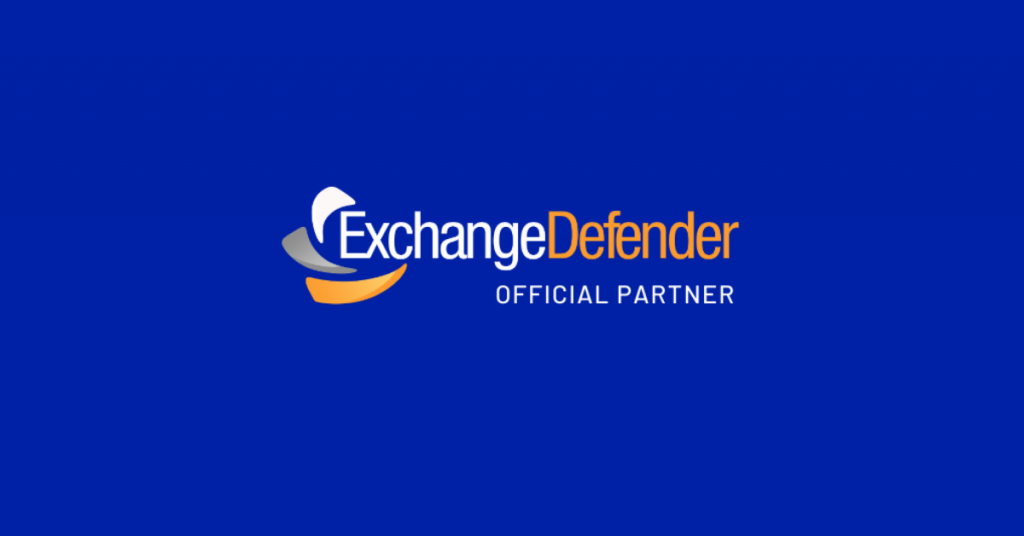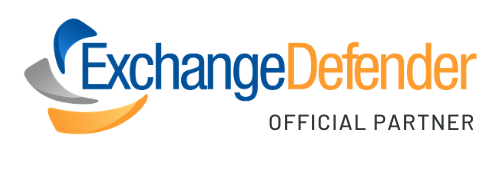How to expand your MSP service offerings

One of the biggest challenges that MSPs are currently facing right now is knowing what to offer (in terms of services) and how to offer it. Due to the pandemic, the business landscape is tricky, and has forced all professional businesses to really look at their services/products and to find a way to reinvent them.
Today, we’ll explore a few ways that could help your MSP business flourish during hard times. The key here is to be resilient, and to create the best conceivable plan for success that will overcome current obstacles.
1. Add more to your current service offerings
The most valuable data you have on your business, is what you currently offer in terms of services. Ask yourself, what do I offer? and What could I be offering now? The most in-demand solutions for our particular industry as MSPs are email security, backup, compliance, and disaster recovery. A great portfolio would showcase an array of solutions that would cover the demand for businesses today. If you offer just security, but not compliance or disaster recovery solutions – research vendors that could help you add these services to your offering (almost instantly).
2. Go bigger with your client size
Sounds like common sense but many MSPs tend to go after companies that are the same size that they are. It’s only natural, but there is a major opportunity for service providers to start making their way into to larger organizations with 50 employees or more. If you already have solid experience with servicing small businesses (25 employees or less), now could be your opportunity to leverage your services to slightly larger organizations. Of course, you will have to think about how to position your business (resources, employees etc) when attempting to attract larger fish. A great way to enter a larger market size is on price, and the ability to offer the best service. Ask your prospective clients, what are they paying now, and perhaps position yourself at a lower price point to land your first larger client.
3. Service Bundles vs. a-la-carte – provide both!
A recent study revealed that 43% of solution providers listed Sales as their biggest challenge this year. Most likely, you are already offering your services a-la-carte, individually. This is a great option for clients who know exactly what they need, or are on a strict budget.
That’s no surprise – but we have a little pro-tip that may help you, as it helped us. Service Bundles are a great way to pitch clients. They offer a clear way to understand the actual cost of services, and the value that they bring. A “bundle” already tells us that there is more than one service included, and that is of great value! What type of service bundles do you currently offer? Here at ExchangeDefender, our individual solutions can be packaged into three distinct packages: Security, Compliance, and Continuity. We looked at all of our clients and determined which services were most popular. Our study showed that for email compliance, our clients were using our Corporate Encryption and our Email Archiving solutions individually. So, we bundled them together and called it a “Compliance Suite”, which automatically raised our revenue, even if by a few dollars per user.
4. Create a sales and marketing plan
Yes, we know – you have heard this a lot, but its true. About 60% of service providers, we surveyed claimed that they did not have overall sales goals, even though they have a solid business plan. It’s important to create brand awareness, to show the world that your company does exist, and has been operating in good-standing since (enter year number here.) Is your website current? Have you created social media profiles for your company? Now is the time to send out company mailers, email newsletters, along with social media ads for facebook, reddit, google – you name it. Here’s a great guide on how to create your own sales and marketing plan.
It sounds like a big money investment, but you control the budget for every aspect. For ads for example, you create your own limits, even if it’s just $5 dollar per day. The same can be said for facebook, youtube, and google ads. Creating your own company social media profiles are free, and so is starting a cool blog for your clients to spread the word.
Download your new ‘Official Partner’ Logo today!

Officially, official.
ExchangeDefender has recently launched an ‘Official Partner’ logo, designed exclusively for our current partners. The logo is a graphic brandmark that features our traditional ExchangeDefender design, as well as the addition of ‘Official Partner’ underneath in dark grey.
There are currently two different versions of the logo to best assist all partners and their individual websites. The option to choose the light, or dark version is totally up to the preference of the partner, (their brand colors, website colors etc.)
Ways to use
We have a few suggestions on how to use your Official Partner logo. The first is on your website. You can download the logo and paste it into your website. Preferably on the front page to show your clients, and prospective clients the current security vendors that you are in partnership. We believe the display of partner logos help express credibility to future clients that you are in good company, and collaborate well with others.
The second option is adding the logo to documents, sale sheets, brochures, invoices – things you would normally give to a potential client. Normally, you would add your company’s logo on the left side, with your partner logo on the right side. Visually its outstanding, and assures the client that you are doing well as an ExchangeDefender business partner, (which you are!).
The third option is using your email footer for when you are emailing back and forth with clients. For example, if you were to look at a company’s signature – you would see the name, title, contact details, as well as any programs, or products that they are currently associated with. The logo is easy to add into outlook or Gmail, and should only take a few mins to complete.
Oh! You can also use the partner logo when making posts on your MSP social media. This could be attached to product specific offerings, or showcasing the third-party vendors that you currently are in partnership.
How to download?
To download is simple.
Below, you’ll find the light version and dark version of the logo. The images are PNG and have transparent background to suit any color. To save, simply right click the image and click save.


Remote-work friendly solutions for business

There is no doubt, the Covid-19 pandemic has completely changed the way that we work today. Daily restrictions of social distancing require all of us to keep our space with many of us still working from home. Despite the current grim reality of 2021, the mobile workforce has been on the rise since before the crisis struck.
It is our jobs as service providers to prepare businesses with solutions that promote secure productivity that is accessible from anywhere. Here at ExchangeDefender, we wanted to share the most popular solutions being sold this year that are remote-work friendly.
Advanced Email Security (ExchangeDefender PRO)
Securing company email is non-negotiable in our digital age, and in 2021 as cyber-attacks have quadrupled in the last year alone. ExchangeDefender Advanced Email Security provides a multi-layered defense against email-borne threats like SPAM, viruses, malware, spoofing, phishing and more. Being honest here, more businesses are asking for our security for our stellar SPAM filtering, and for our advanced phishing and spoofing policies. They are proven to be gold standard in the market right now, most likely because we don’t trust sources easily. Our AI-based email protection provides the strongest defense against spear phishing, account compromise and domain fraud. It offers protection to employees from falling prey to sophisticated email-based attacks.
Web File Sharing
This is our secure file sharing and storage platform that simplifies collaboration in the digital workplace. You can share large files, manage documents, and have unlimited storage for one flat rate. A major benefit is giving your clients access to your file sharing portal to complete transactions together. For security, you can password-protect any file, and control user access to content with expiration dates. Web file sharing makes it easy for teams to share documents without having to rely on email, or old file servers. Of course, Web File Sharing is a regulatory web service and is compliant with all E.U and US regulations.
Live Archive (Email outage protection)
Our rising star as most employees were being sent to work from home, is Live Archive – our email outage protection. It offers interrupted access to live and archive email. It gives businesses an email continuity solution that keeps an organization sending and receiving email without disruption. In plain English, if Gmail or Outlook is experiencing a service outage (which they often do), you would still be able to continue emailing using ExchangeDefender’s live archive. See how it works here!
Corporate Encryption
This was our best-seller last year (in 2020). It was relaunched with advanced encryption options, and became the first of its kind to offer 3 different ways to send a secure message. You can easily send and receive encrypted messages by email, url, or by sms text message. ExchangeDefender Corporate Encryption is easy to use, can auto-detect sensitive data, and offers real-time reporting. Our service integrates easily, and is compatible with all major email service providers – including Office 365, on-premise Exchange, and G-Suite for Business.
If you are an ExchangeDefender partner, we would strongly suggest you to push these remote-work friendly solutions to your clients if you have not already. Our current data shows that the solutions mentioned above have been the most requested from clients since the beginning of 2020. All ExchangeDefender services are available via the cloud, and do not require any downloads or software installations to use. If you are interested in sales and marketing collateral, please submit a ticket request at our support portal – we will have the information to you within 24 hours.
4 growth strategies to expand your MSP business

Every business on the planet is looking for ways to grow, whether you have 2 people on the books, or 2,000. One of the major challenges for MSPs in particular right now is creating and executing a growth strategy. Easier said than done of course, but today we’ll explore a few strategies that will help point you in the right direction.
What is a growth strategy?
A growth strategy can be defined as a special business plan that is created to overcome current or future challenges in order to achieve goals of expansion. Some good examples of growth strategy goals could be: improving your business’ products or services. It could be to acquire new assets like people or resources. Today, we’ll go over the four main growth strategies that companies use in hopes of expansion.
Strategy #1 – Market Penetration
When we talk about market penetration, we are really talking about how well-known a product or service in a particular market. Normally, this is measured by the amount of sales compared to the total market share for that product/service.
What are some examples of market penetration strategy? This could be the raising or lowering of your prices. Often, customers will look for a service that is the best in the market for the lowest price. It is really hard to compete like this, but if you can be competitive (not cheap) with your pricing then you may be able to acquire more customers. Another strategy is defining new target market segments. Let’s say – you’re a service provider, and you’ve only been servicing one type of businesses. You could consider offering your services to other professional businesses that are like-minded, and could use your service.
Strategy #2 – Service / Product Development
The main focus of this tactic is to be creative in how you offer your services. Take a look at your service offerings, could you sell something new? Like develop a new service bundle with your current services, or modify the existing services you offer in a way that would be beneficial for current pain points for businesses. This could be like how we upgraded and completely revamped our Corporate Encryption service. Of course, you could offer your same services but for a new market, as mentioned in the first strategy.
Strategy #3 – Market Expansion
A market expansion strategy focuses on selling current services in a completely new market from where your business currently operates in. For example, a company who operates solely via a partner-channel to sell their services, could start providing their services directly to customers in a direct-to-market strategy. The company is still offering the same services, but is offering them directly, instead via their channel of partners. This usually occurs when growth has peaked in a sales cycle, and the company develops an expansion strategy to overcome their current sales growth challenges.
Strategy #4 – Diversification Strategy
This particular plan is more complex and has at least 5 or 6 different types of diversification strategies. However, we will focus on the most common here, like horizontal diversification. This is when you introduce new services to your current offering in order to expand your market share. Normally a company will license new products, or even merge/acquire another company. Vertical diversification is another popular strategy which focuses on expanding its product line by creating a similar product for the same market. For example, a painting business that provides residential painting services, could start selling their own paint. Same target market (people who need their homes painted), but a new service and opportunity for the painting company to grow by not only painting the homes, but selling the paint itself to paint the homes.
Pro tip from us: Your current clients are your biggest assets. Take a look at what industries they are in, and explore if there are other sectors that could benefit from your services. Like if you currently service law firms, you could also service accountant and financial professionals, right? Secondly, take a look at the services that you are offering. Is there any way that you could expand your service offerings without shelling out too much money upfront? Be sure to compare vendors – their pricing, their fees, solutions offered etc.




